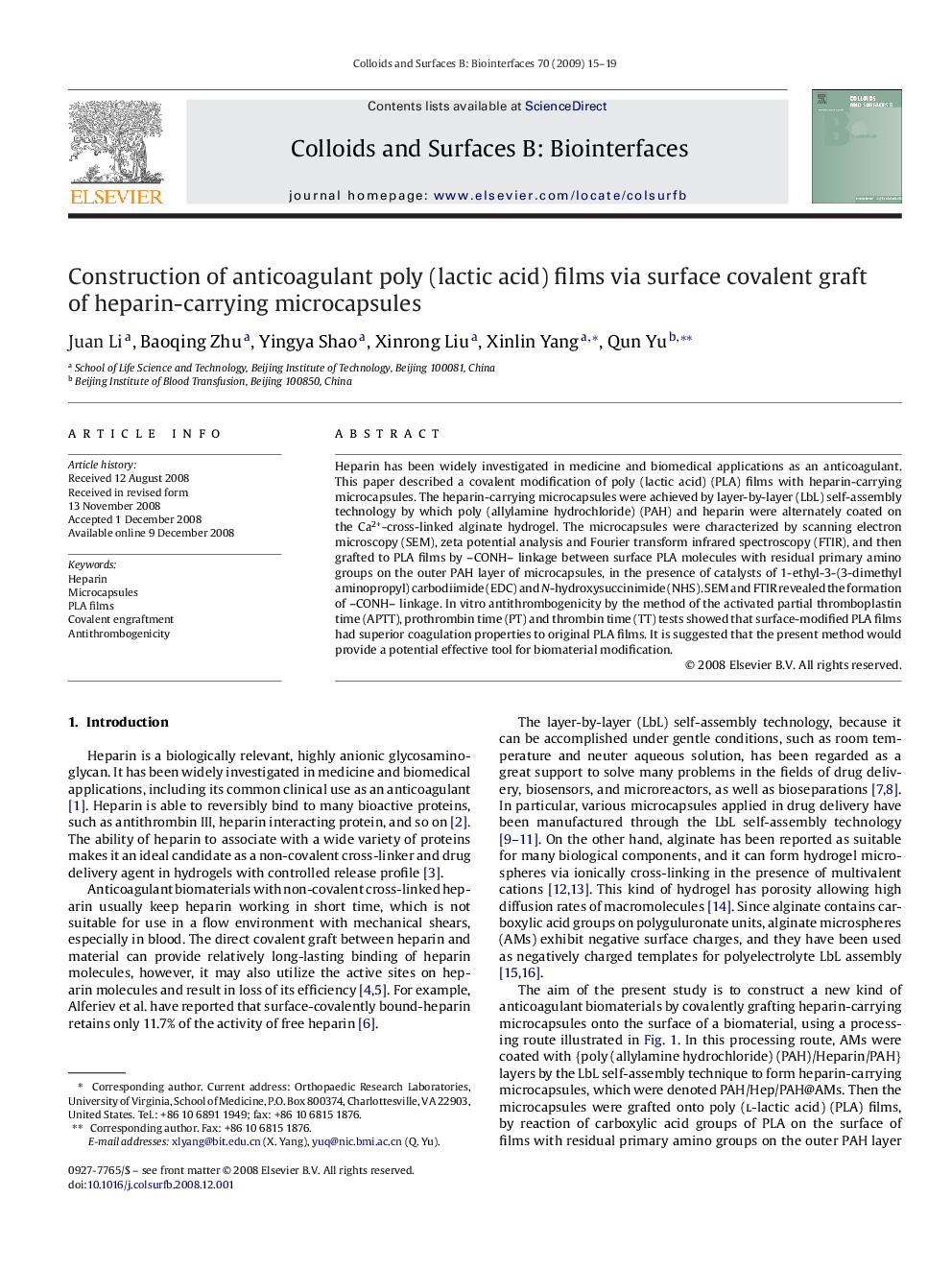| Article ID | Journal | Published Year | Pages | File Type |
|---|---|---|---|---|
| 602412 | Colloids and Surfaces B: Biointerfaces | 2009 | 5 Pages |
Heparin has been widely investigated in medicine and biomedical applications as an anticoagulant. This paper described a covalent modification of poly (lactic acid) (PLA) films with heparin-carrying microcapsules. The heparin-carrying microcapsules were achieved by layer-by-layer (LbL) self-assembly technology by which poly (allylamine hydrochloride) (PAH) and heparin were alternately coated on the Ca2+-cross-linked alginate hydrogel. The microcapsules were characterized by scanning electron microscopy (SEM), zeta potential analysis and Fourier transform infrared spectroscopy (FTIR), and then grafted to PLA films by –CONH– linkage between surface PLA molecules with residual primary amino groups on the outer PAH layer of microcapsules, in the presence of catalysts of 1-ethyl-3-(3-dimethyl aminopropyl) carbodiimide (EDC) and N-hydroxysuccinimide (NHS). SEM and FTIR revealed the formation of –CONH– linkage. In vitro antithrombogenicity by the method of the activated partial thromboplastin time (APTT), prothrombin time (PT) and thrombin time (TT) tests showed that surface-modified PLA films had superior coagulation properties to original PLA films. It is suggested that the present method would provide a potential effective tool for biomaterial modification.
